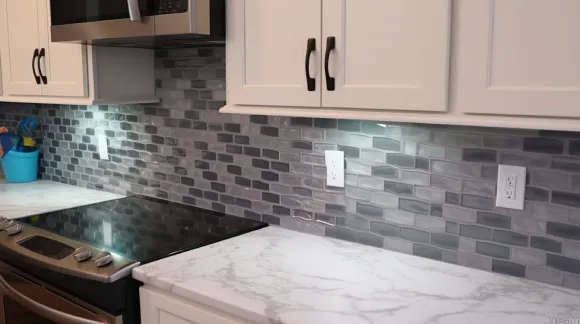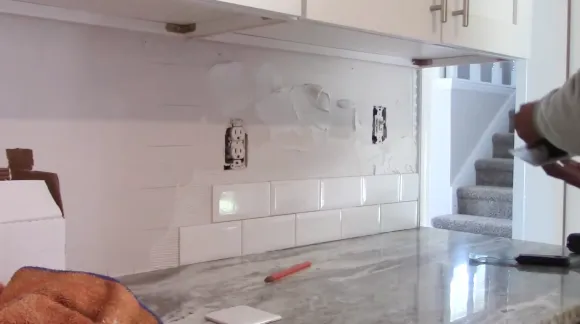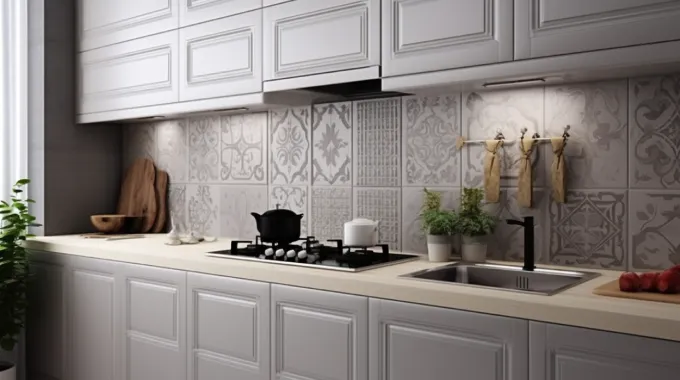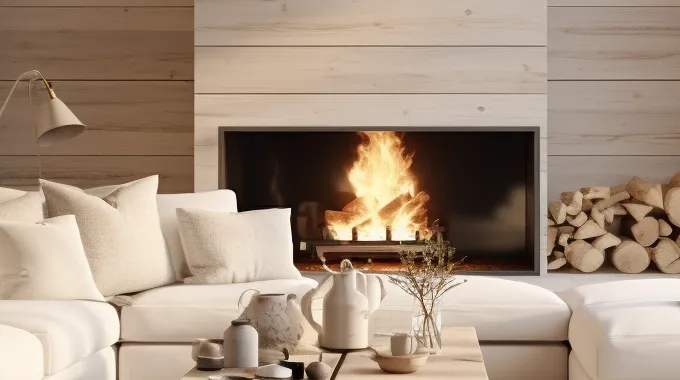Last Updated on September 16, 2023
You may be concerned about the stability and safety of your backsplash and wish to install a cement board for better adhesion. But is cement board really necessary for backsplashes?
While it is not always mandatory, a cement board is highly recommended as a substrate for tile installations for backsplashes. By using cement board, you can ensure that your backsplash will have a solid and stable surface to adhere the tiles to, preventing any potential damage or shifting over time.
Today, we’ll explore the reasons why a cement board is necessary for your backsplash project. Plus, we’ll discuss alternatives if you cannot use cement board.
Why Do You Need Cement Board for Backsplash: Reasons Explained

While it’s not an absolute requirement in every situation, using cement board for a backsplash is generally recommended for the following reasons:
- Improved moisture resistance
- More stability
- Better tile adhesion
- Backsplash flexibility
- Greater heat resistance
- Maintaining code and industry standards
1. Improved Moisture Resistance
If you want to ensure better moisture resistance for your backsplash, using a cement board is a smart choice. Backsplashes are often exposed to water and humidity in kitchens and bathrooms, making them susceptible to mold and mildew growth.
However, cement board provides a more durable and water-resistant surface than traditional drywall.
Made from cement and reinforcement fibers, this material can withstand the effects of moisture without compromising its structural integrity. Its unique composition allows it to resist damage from water, preventing any potential issues that may arise from prolonged exposure.
2. More Stability
Consider using a cement board as a solid and reliable base to ensure your tiled surface remains stable. A cement board is intended to provide stability and minimize the chances of tiles cracking or popping loose.
Its rigid and durable composition is a strong foundation for your backsplash, ensuring long-lasting support.
When tiles are installed directly onto drywall or other less stable surfaces, they may not adhere properly and can become prone to movement and damage. Cement board offers a level of rigidity that helps prevent this from happening.
By giving your tiles a secure base to bond with, the cement board guarantees a more stable installation that will stand the test of time.
3. Better Tile Adhesion
Make sure the surface is rough and porous for a stronger bond between your tiles and adhesive. A cement board provides this ideal surface for better tile adhesion in backsplash installations. The rough texture of the cement board creates more grip, allowing the adhesive to adhere firmly to the board.
Also, its porous nature allows for better penetration of the adhesive into the material, ensuring a secure bond that withstands daily use and moisture exposure.
With cement board, tiles may adhere properly and become loose over time. Using cement board as a substrate for your backsplash, you can be confident that your tiles will stay in place and maintain their beautiful appearance.
4. Backsplash Flexibility

A cement board provides a sturdy and rigid surface for tile installation. This rigidity is particularly important regarding backsplashes, as they often bear the brunt of daily wear and tear in your kitchen or bathroom.
Unlike other materials that may flex or shift over time, the cement board remains stable and helps prevent any potential damage to your tiles. With its inherent strength and resistance to movement, the cement board ensures that your backsplash remains securely fixed.
If you bump into it accidentally while cooking or cleaning or experience minor impacts from pots and pans, the cement board is a reliable barrier.
5. Greater Heat Resistance
If you’re concerned about heat damage in your kitchen, it’s worth considering cement board as a solution for added heat resistance.
Over time, constant exposure to high temperatures can damage backsplashes, especially those near stovetops.
A cement board is designed to withstand these extreme heat conditions and provide extra wall protection. This fire-resistant material uses cement and reinforcing fibers, ideal for areas prone to intense heat.
6. Maintaining Code and Industry Standards
To maintain code and industry standards, ensure that your tile installations in wet or moisture-prone areas meet the recommendations of using cement boards.
A cement board is a durable and moisture-resistant material that provides a stable surface for tile installation. It helps prevent water damage, mold growth, and tile breakage by creating a barrier between the tiles and the underlying substrate.
By following these recommendations, your backsplash is sure to withstand the test of time and adhere to industry best practices.
Can I install a backsplash without a cement board?

Installing a backsplash without cement board is possible if your wall is in good condition and has no major issues. A cement board is commonly used as a base for tile installations because it provides stability and helps prevent moisture damage.
However, if your wall is smooth, flat, and free of cracks or ridges, you can skip using cement board. Remember that this approach may only meet some industry standards or building codes, so consulting a professional is essential before proceeding.
Also, remember that cement boards can offer protection against potential issues like water damage and tile movement over time.
What can I use instead of the backsplash cement board?
Consider alternative materials such as plywood or drywall to support your backsplash instead of cement board. While cement board is commonly used in backsplash installations due to its durability and moisture resistance, it may only sometimes be necessary or the best option.
Plywood can be a cost-effective alternative that provides a strong and stable surface for tile installation. It is important to use exterior-grade plywood to withstand any moisture exposure.
Conversely, drywall is more budget-friendly but requires proper preparation and sealing before tiling. Apply a waterproofing membrane or primer to protect the drywall from water damage.
Improve Your Backsplash with Cement Board: Ultimate Solution for Durability
We recommend cement board as your backsplash material. It provides a sturdy, durable surface that can withstand the moisture and heat typically found in kitchens and bathrooms. While installing a backsplash without a cement board is possible, doing so may result in a less stable and long-lasting installation.
If you choose not to use cement board, consider alternatives such as tile underlayment or waterproof drywall. These alternatives can provide some level of protection but may offer a different level of durability than cement board.



